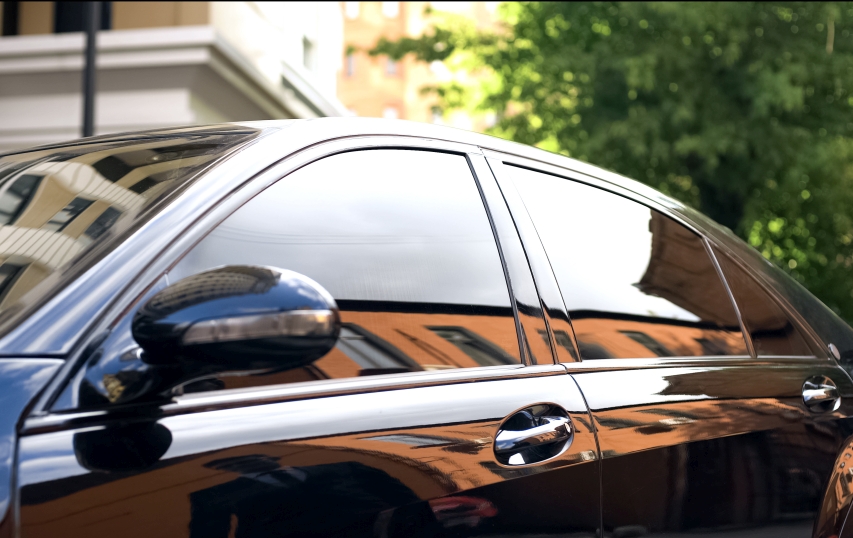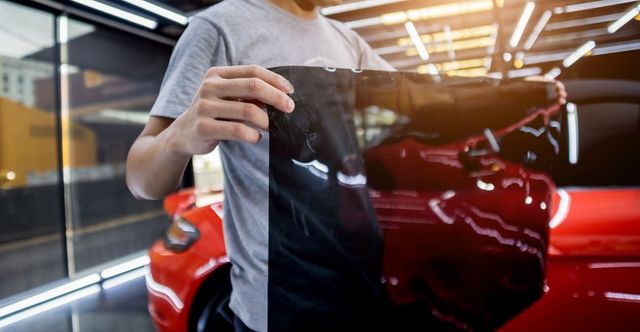Top Reasons to Invest in window tinting for Your Company Area
Wiki Article
Checking Out the Different Kinds of Home Window Color for Cars and Their Advantages

Dyed Window Color
Colored home window tint is a prominent choice among car proprietors seeking to improve privacy and reduce glow while keeping an elegant appearance. This type of color is developed by integrating dye right into the glue layer, which is then put on the home windows of the automobile. The main appeal of colored home window tint hinges on its ability to give a cosmetically pleasing look without sacrificing capability.One of the most substantial benefits of dyed window color is its capacity to obstruct unsafe UV rays, assisting to safeguard both guests and the automobile's inside from sunlight damage. In addition, this tint effectively lowers glare, adding to a much more comfy driving experience, particularly throughout brilliant daytime conditions. The growing of window shade also includes a layer of privacy, making it a lot more difficult for outsiders to see inside the car.
Nonetheless, it is vital to keep in mind that while dyed home window tint uses numerous advantages, it might not give as much heat denial as other sorts of colors. Moreover, its durability can be influenced by exposure to extended sunshine, potentially resulting in fading with time. Overall, dyed window tint stays a favored choice for those focusing on aesthetic appeals and standard sunlight protection.
Metalized Home Window Tint
Metalized home window tint represents a sophisticated alternative for auto proprietors looking to enhance both efficiency and aesthetics. One of the key advantages of metalized home window tint is its exceptional warmth being rejected abilities, which can dramatically minimize the interior temperature level of a car.
In addition, metalized colors provide increased longevity compared to colored films, making them immune to fading and scraping. This longevity makes sure that the tint keeps its efficiency and look in time, giving long-lasting worth.
Furthermore, metalized home window tint can boost personal privacy and safety and security by making it harder for outsiders to see inside the vehicle. The reflective high quality of the color can also hinder potential burglary, as valuables are less noticeable (window tinting). While it may hinder some digital signals, such as GPS or mobile phone function, the overall advantages make metalized home window tint a compelling option for lots of car proprietors
Ceramic Window Color
Offering sophisticated modern technology and exceptional performance, ceramic window color has become a top choice for critical automobile proprietors. This ingenious movie is made up of advanced ceramic bits that supply substantial heat being rejected while preserving quality and visibility. Unlike standard colors, ceramic home window color does not depend on metal or dye, which can interfere with electronic signals from gadgets such as general practitioner and cell phones.One of the standout benefits of ceramic window tint is its phenomenal UV protection. It blocks up to 99% of hazardous ultraviolet rays, thus safeguarding both the automobile's interior and its occupants from sunlight damages. In addition, this sort of color boosts personal privacy without endangering presence, making it a sensible alternative for day-to-day vehicle drivers and deluxe lorries alike.
Ceramic home window color likewise boasts sturdiness; it is resistant to fading and scratching, guaranteeing long-lasting efficiency. Its non-reflective nature implies it does not cause glow, contributing to safer motoring problems (window tinting). For those seeking a premium color option that integrates appearances with functionality, ceramic home window tint stands apart as an exceptional choice, supplying improved comfort and defense when traveling
Carbon Home Window Color
When it comes to home window tinting choices, carbon home window tint has actually acquired popularity for its mix of performance and price. This kind of color is composed of carbon fragments, which supply a distinct matte surface that boosts the aesthetic allure of automobiles. Among the main benefits of carbon window color is its capability to obstruct a substantial amount of harmful UV rays, securing both the automobile's interior and its passengers from skin damages and fading.Furthermore, carbon home window tint uses outstanding warmth rejection homes, lowering the requirement for too much a/c and enhancing gas efficiency. Unlike dyed colors, carbon tints do not fade with time, maintaining their efficiency and look for years. This toughness makes them a sensible choice for cars and truck proprietors looking for lasting worth.
Additionally, carbon home window color is non-metalized, which indicates it does not interfere with digital signals, making it suitable for lorries geared up with general practitioner, Bluetooth, and other useful reference cordless modern technologies. The equilibrium of cost, efficiency, and aesthetic allure has actually established carbon window color as a recommended choice for many car owners. Eventually, it functions as a trusted remedy for those looking to enhance comfort while making sure design.
Manufacturing Facility Color
Manufacturing facility color, likewise called OEM tint, refers to the tinting that is put on vehicle home windows throughout the production process. This kind of color is commonly integrated right into the glass itself, providing an uniform appearance and regular degrees of shielding throughout all windows. The primary purpose of manufacturing facility color is to decrease glare and enhance guest convenience while supplying a level of UV security.
While manufacturing facility color uses fundamental benefits, it may not offer the exact same level of heat rejection or personal privacy as higher-grade aftermarket colors. Car owners looking for improved performance might take into consideration extra tinting options, while still valuing the visual appeal and functionality manufacturing facility tint provides.
Verdict

Nonetheless, it is necessary to note that while colored window color offers countless advantages, it might not provide as much warmth rejection as various other types of tints. For those looking for a premium color solution that incorporates looks with functionality, ceramic window color stands out as an exceptional selection, Full Article delivering improved convenience and protection on the roadway.
When it comes to home window tinting options, carbon window color has acquired appeal for its mix of performance and cost.Manufacturing facility tint, likewise recognized as OEM color, refers to the tinting that is applied to automobile home windows during the manufacturing process. The specific degree of tint can vary depending on the vehicle maker and version, with some vehicles featuring a lot more significant color on rear windows than on front windows.
Report this wiki page